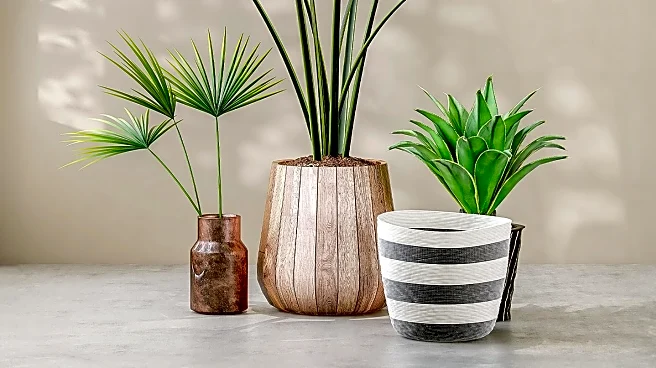What's Happening?
Houseplants are being promoted as natural air purifiers, capable of removing toxins such as formaldehyde and benzene from indoor environments. Studies, including one by NASA, have identified several plants like
pothos ivy and gerbera daisies that can absorb pollutants. However, experts caution that while these plants can improve air quality, they are not substitutes for air purifiers, which are necessary to handle dust and fine particulate matter. Tech startup Neoplants claims to have developed a solution that enhances the air-cleaning capabilities of plants, but the effectiveness of such innovations is still debated.
Why It's Important?
The interest in houseplants as air purifiers reflects a growing trend towards natural solutions for improving indoor air quality. This is significant as poor air quality can lead to health issues such as respiratory problems and allergies. While houseplants offer a cost-effective and aesthetically pleasing option, their limitations highlight the need for comprehensive air purification systems in homes. The development of enhanced air-purifying plants could potentially revolutionize indoor air quality management, offering a more sustainable and eco-friendly alternative to traditional air purifiers.
What's Next?
Further research and development in the field of bioengineered plants could lead to more effective natural air purification solutions. As awareness of indoor air quality issues grows, consumers may increasingly seek out innovative products that combine aesthetics with functionality. Companies like Neoplants may continue to explore ways to enhance the air-cleaning capabilities of plants, potentially leading to new market opportunities and advancements in biotechnology.
Beyond the Headlines
The ethical implications of genetically modifying plants for air purification purposes could become a topic of discussion. Balancing technological innovation with environmental sustainability and biodiversity conservation will be crucial as this field evolves. Additionally, the cultural shift towards integrating nature into living spaces may influence interior design trends and consumer preferences.













